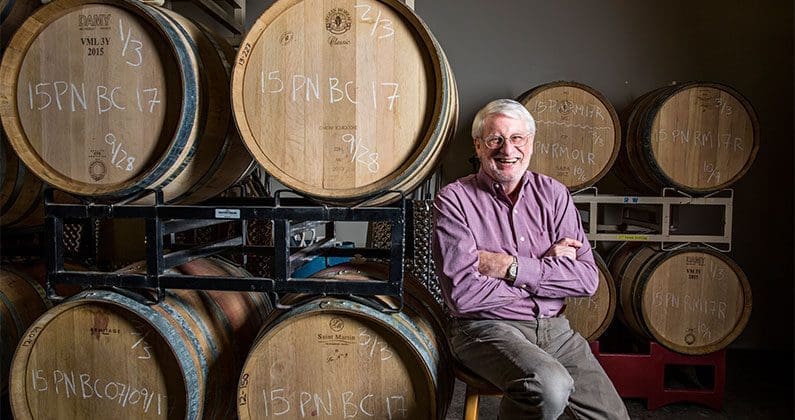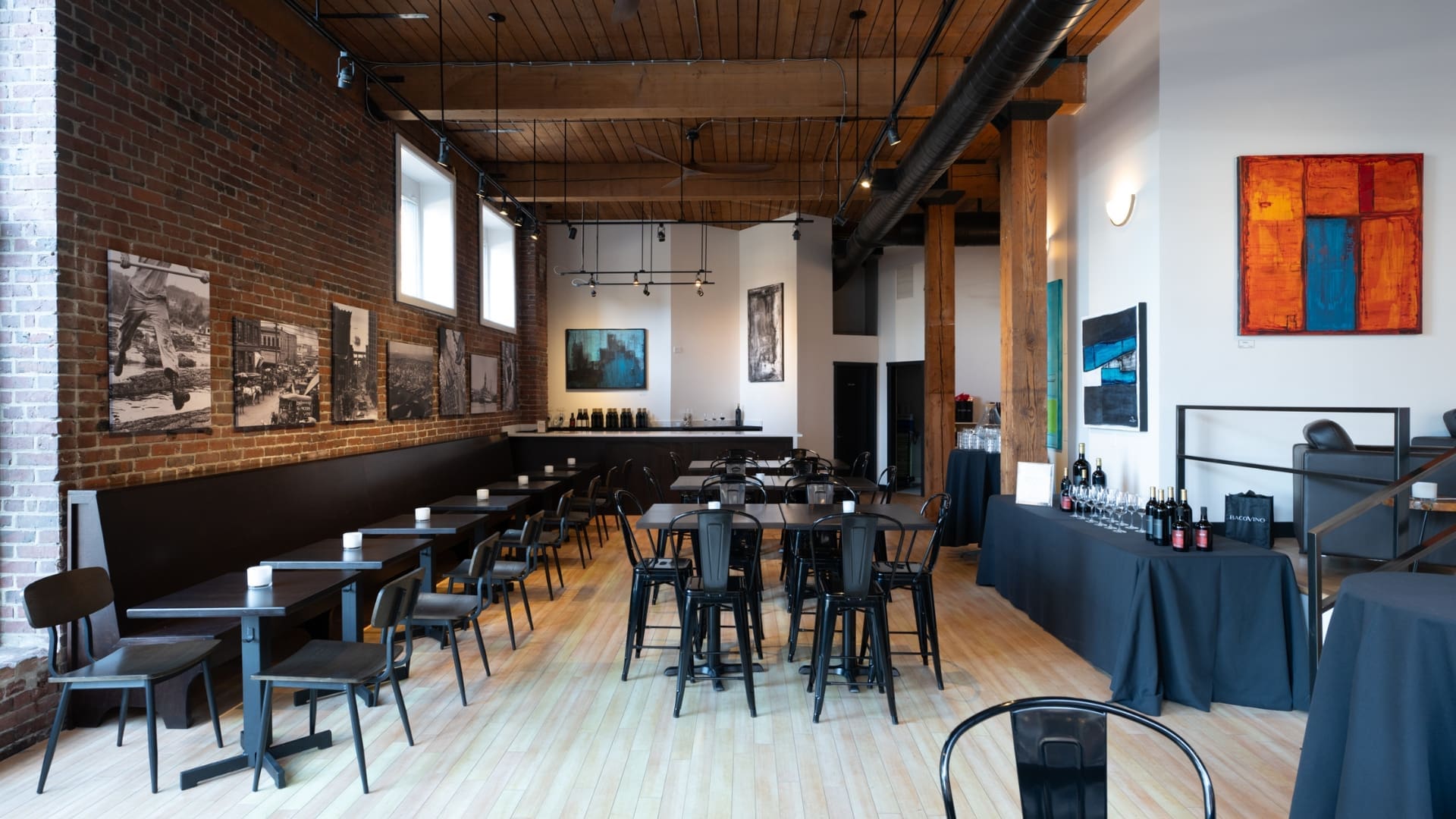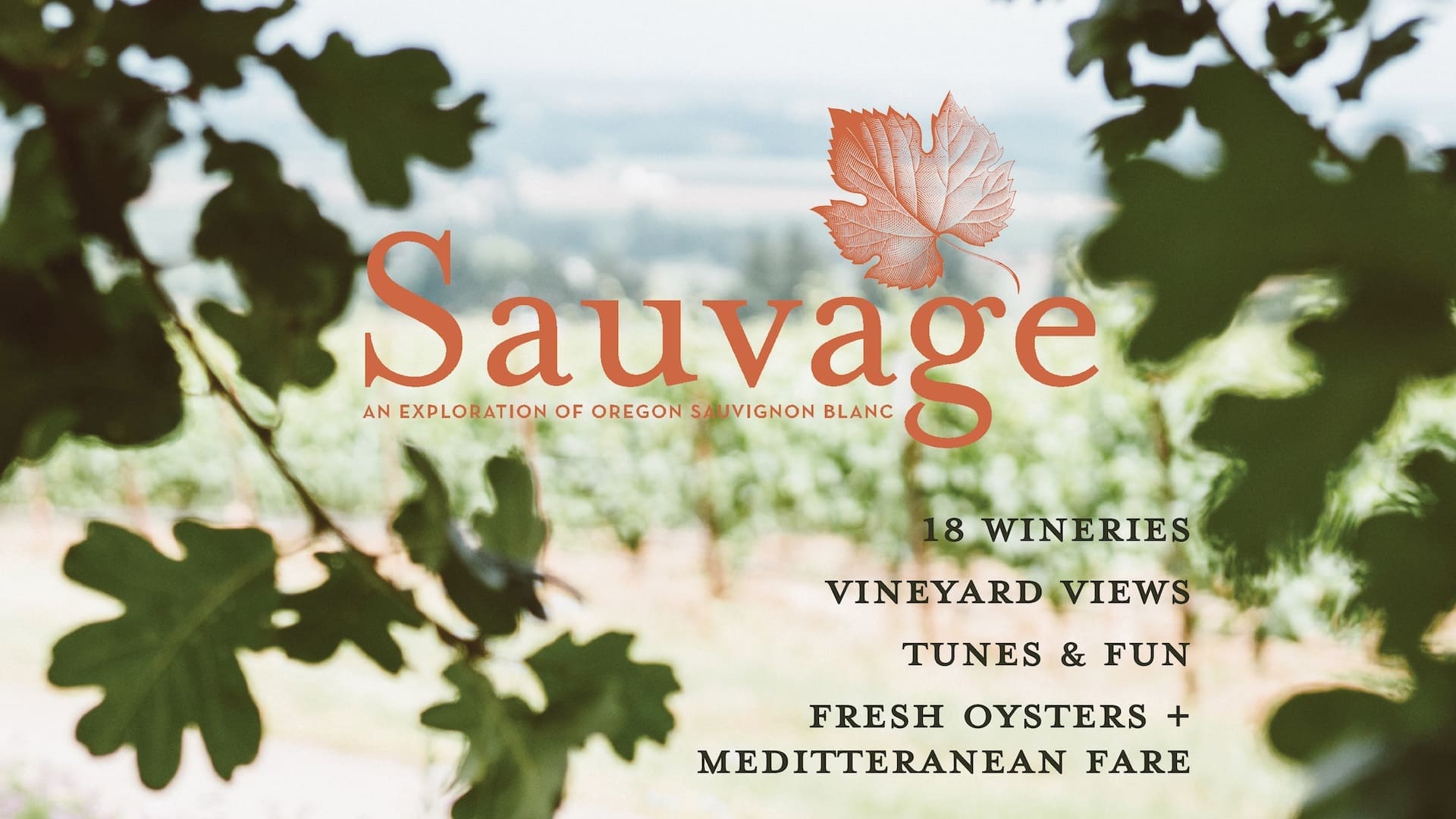Oregon’s wine industry has shifted from a mom n’pop, seat-of-the-pants type business to a region of wines internationally admired with increasing concentration, reputation and collegiality. So says David Adelsheim, president and founder of Adelsheim Vineyard, who has seen the industry and market evolve since the Chehalem Mountains winery opened in 1978 with 1,300 cases. Today, Adelsheim Vineyard farms a dozen properties that span more than 229 acres in four different appellations and Adelsheim says it’s time to home in on a focus.
“We’ve really come to realize that we need to act with more reverence to our place now that everybody else is doing that,” says Adelsheim about processing this evolution. “We need to be making wines that have the clarity and focus that you would be doing if you were in Burgundy. We have the grapes, we just tended to put them together in larger blends. What we need to do is really keep them more separate and really have a focus.”
Separating themselves from the increasing artisanal pack, Adelsheim and his winery have developed a strategy to extend over the next 5-10 years and will return the winery back to its place of origin, the Chehalem Mountains. The winery will also return to focused Chardonnay and Pinot Noir production rather than six different varieties it is currently processing. And ultimately, Adelsheim and team plan to be estate-bottled as soon as production reaches that level.
The Breaking Ground Pinot Noir is the first representation of that strategy in a bottle, and the first wine to receive a designation for Chehalem Mountains. Historically, the wines have featured the faces and names of people on the labels, such as a reserve that was named after Adelsheim’s daughter.
This is also the first wine made from all three major soil types — marine sediment, basaltic and silt — in the Chehalem Mountains. “Maybe there is something to the Chehalem Mountains that isn’t just dependent on which soil in the Chehalem mountains you’re in,” Adelsheim says. “Maybe there is a style that if you make wines from sites on the three different soils, and you put them together thoughtfully, that you might end up with a wine that makes sense.”
On the soil breakdown, marine sedimentary soil — a mix of broken down sandstone and siltstone, formed under the ocean and brought to the surface through geological processes — is the oldest type, followed by basaltic soils, which derived from the cataclysmic Missoula floods that rushed through eastern Washington and Oregon in a salty sweep. Silt, the third soil type, is found on the northern side of the mountain range. The basalt, instead of being eroded away, was covered roughly 50-100 million years ago by the same kind of silt that covers much of eastern Washington.
The region reaches from Parrett Mountain in the south and across Bald Peak and Ribbon Ridge in the northwest, with the highest elevations and some of the most diverse soils in the state, creating an optimal opportunity for world-class Pinot Noir.
So what does a Chehalem Mountains wine taste like and how does that differ from a Willamette Valley wine? According to Adelsheim, that question has even baffled the people who work in the AVA.
“There aren’t many wineries that are equipped to make the statement that the Chehalem Mountains are an amazing place to grow Pinot Noir,” Adelsheim says. “And trying this wine has a means toward us proving that to you.”












